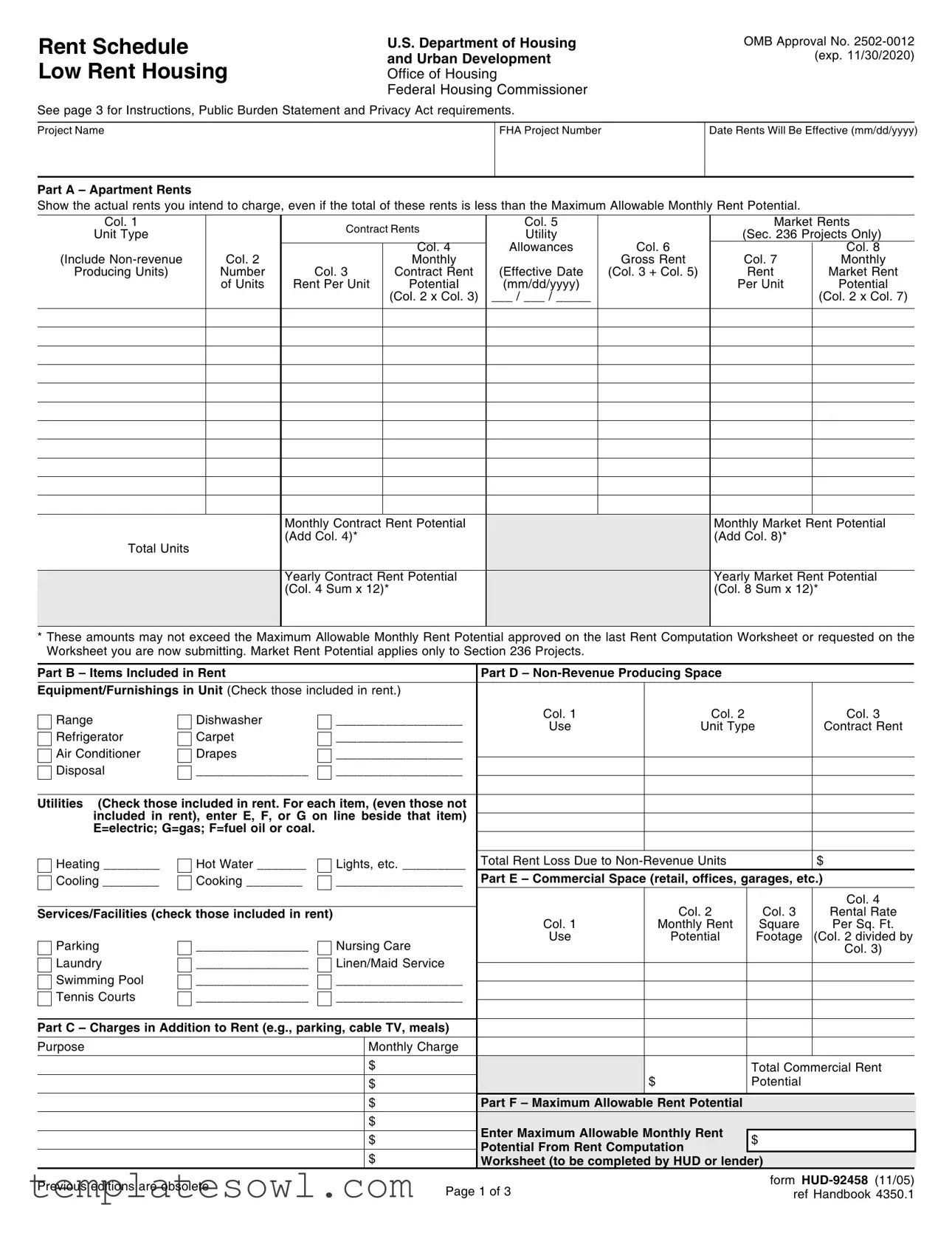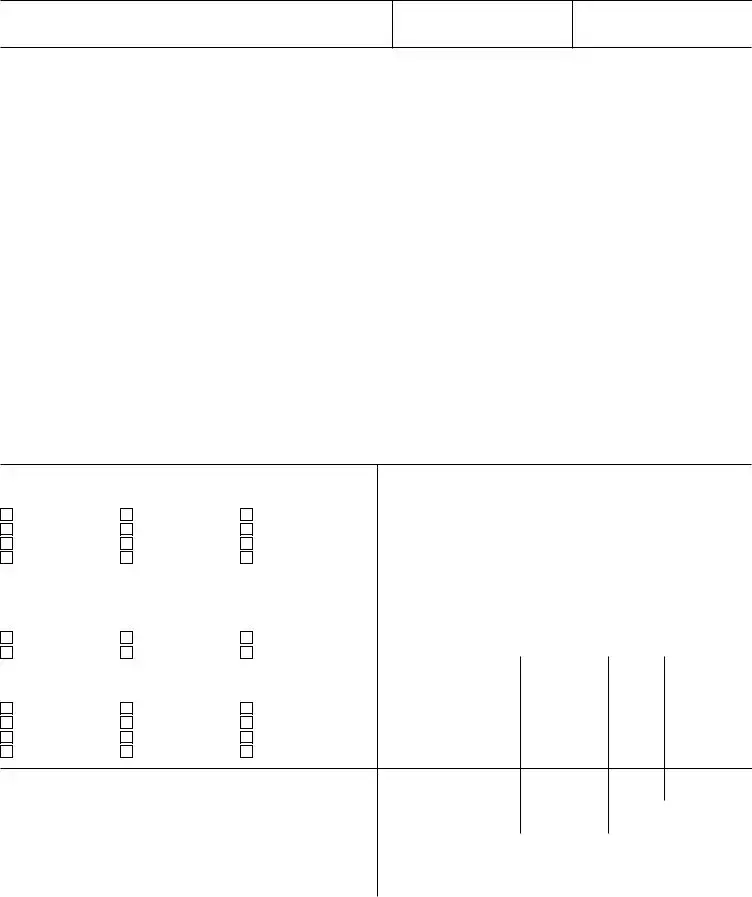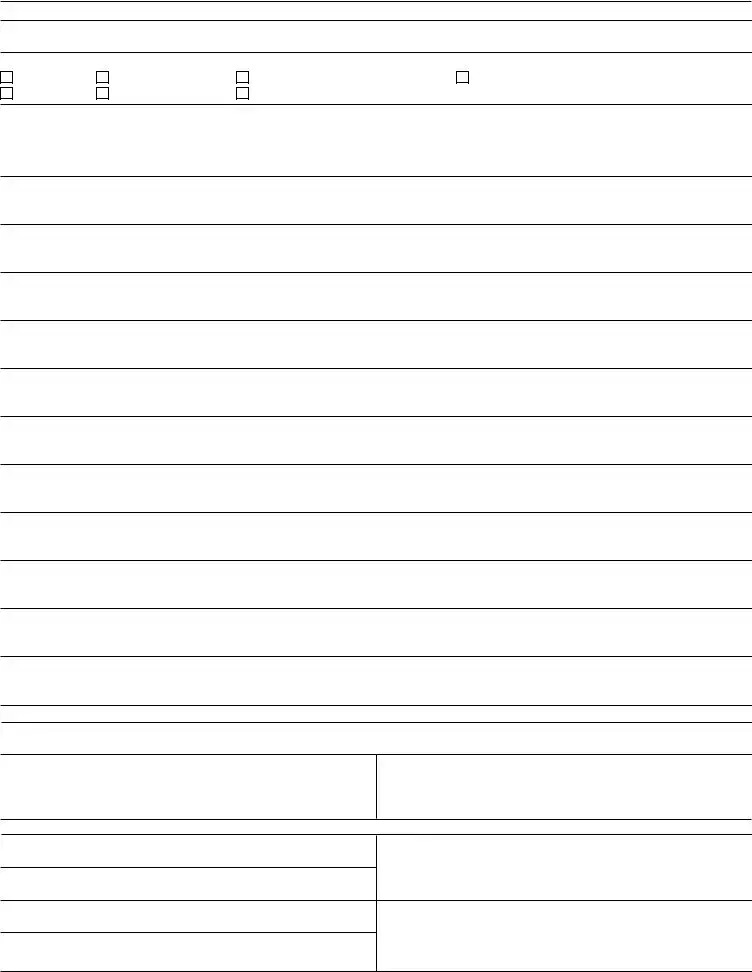What is the HUD 92458 form used for?
The HUD 92458 form is used by project owners to request adjustments to rents for low-rent housing. This form allows owners to itemize rents, utility allowances, and other charges associated with different unit types. It ensures that rent levels comply with federal guidelines and that tenants are not overcharged.
Who needs to submit the HUD 92458 form?
Any project owner seeking to adjust rents for properties with FHA-insured or HUD-held mortgages must submit this form. This includes all types of housing projects where rent adjustments are necessary.
What information is included in Part A of the form?
Part A of the HUD 92458 form details the apartment rents you intend to charge. You'll need to show actual rent amounts, potential market rents, and utility allowances for various unit types. It captures important data like the number of units and their respective rent potential, ensuring transparency and compliance with federal guidelines.
What should I do if my proposed rents exceed the maximum approved amount?
If your proposed rents exceed the Maximum Allowable Monthly Rent Potential, complete only Columns 1 and 2 of Part A. You should clearly outline your proposed rents in the cover letter that accompanies your rent increase request.
What types of units does the form ask about?
The form asks about various unit types based on the number of bedrooms and bathrooms. You can specify details like living rooms and kitchens to classify the units accurately. It's essential for determining appropriate rents for each type of unit and ensuring proper approval.
What should I include in Part B regarding items included in rent?
In Part B, you will list items in each unit that are covered by the rent. This includes appliances like ranges and refrigerators, as well as utilities included in rent. Make sure to clearly indicate what is and isn’t included to avoid any confusion among tenants and regulatory bodies.
What is Part D about and how do I complete it?
Part D addresses non-revenue producing spaces, like common areas or facilities not generating income. You’ll need to provide details about these spaces, including any services or amenities that are included in the rent, like parking or laundry facilities. Understanding how to fill this out accurately prevents misreporting and clarifies your rental offerings.
What happens if I provide false information on this form?
Providing false information on the HUD 92458 form can lead to serious consequences, including criminal or civil penalties. It's crucial to ensure all details are accurate. HUD takes such claims seriously, as they aim to protect both tenants and the integrity of the housing program.
How is the information on this form used by HUD?
HUD uses the information submitted via the HUD 92458 form to monitor compliance with rent regulations and ensure that owners are not overcharging tenants. The data helps HUD maintain accurate records and enforce regulations, making it an important part of housing administration.



